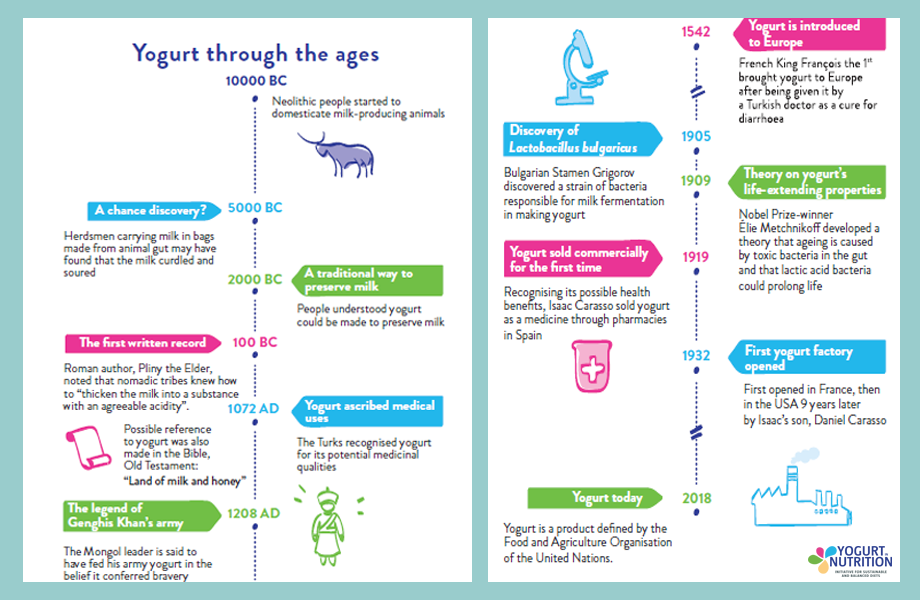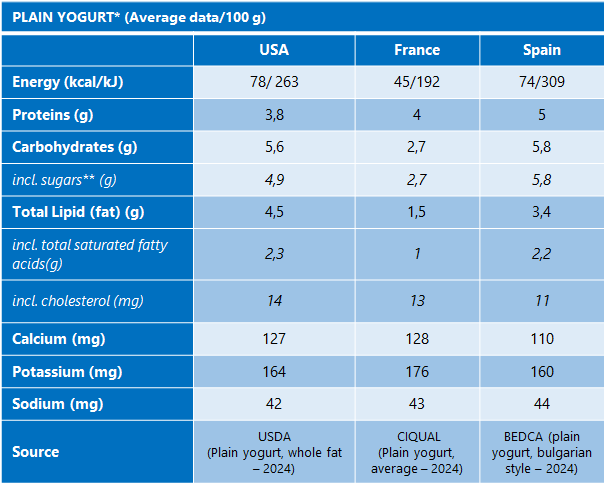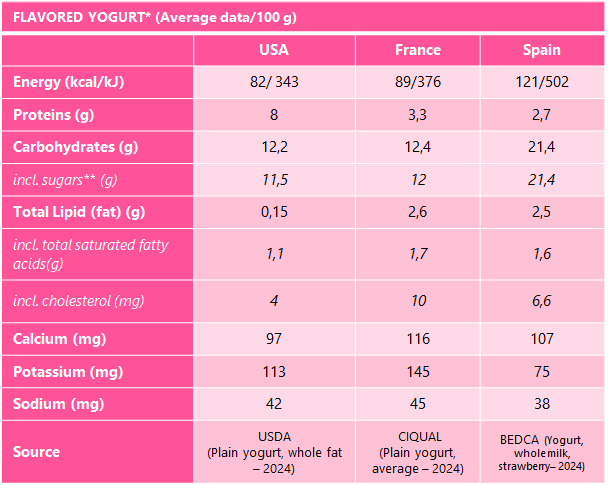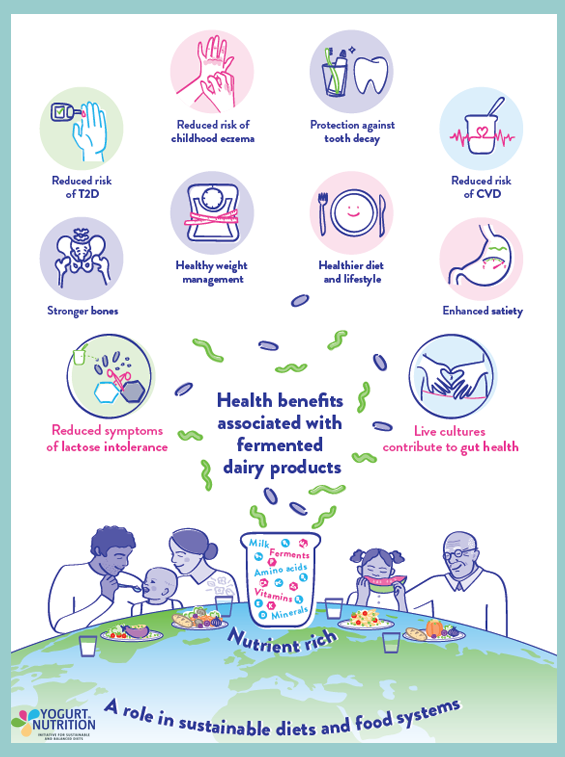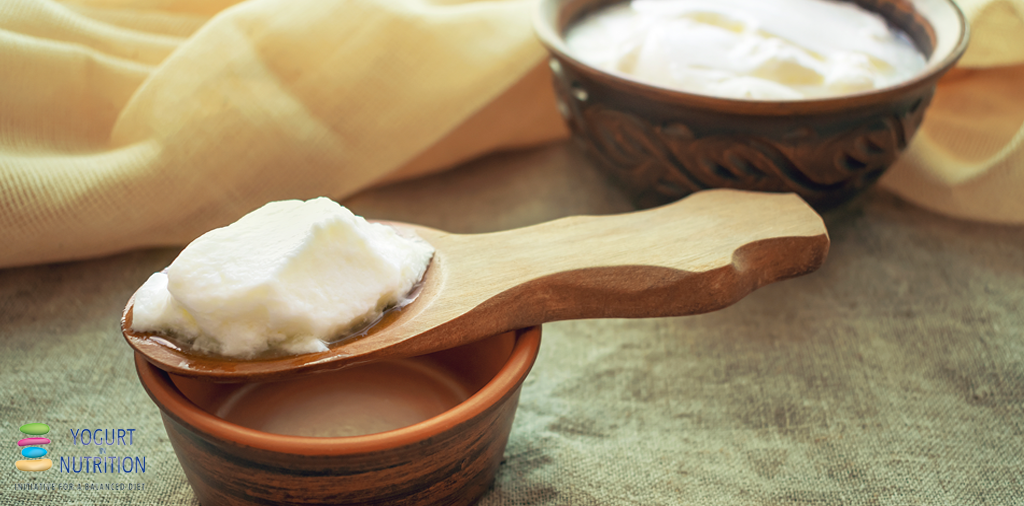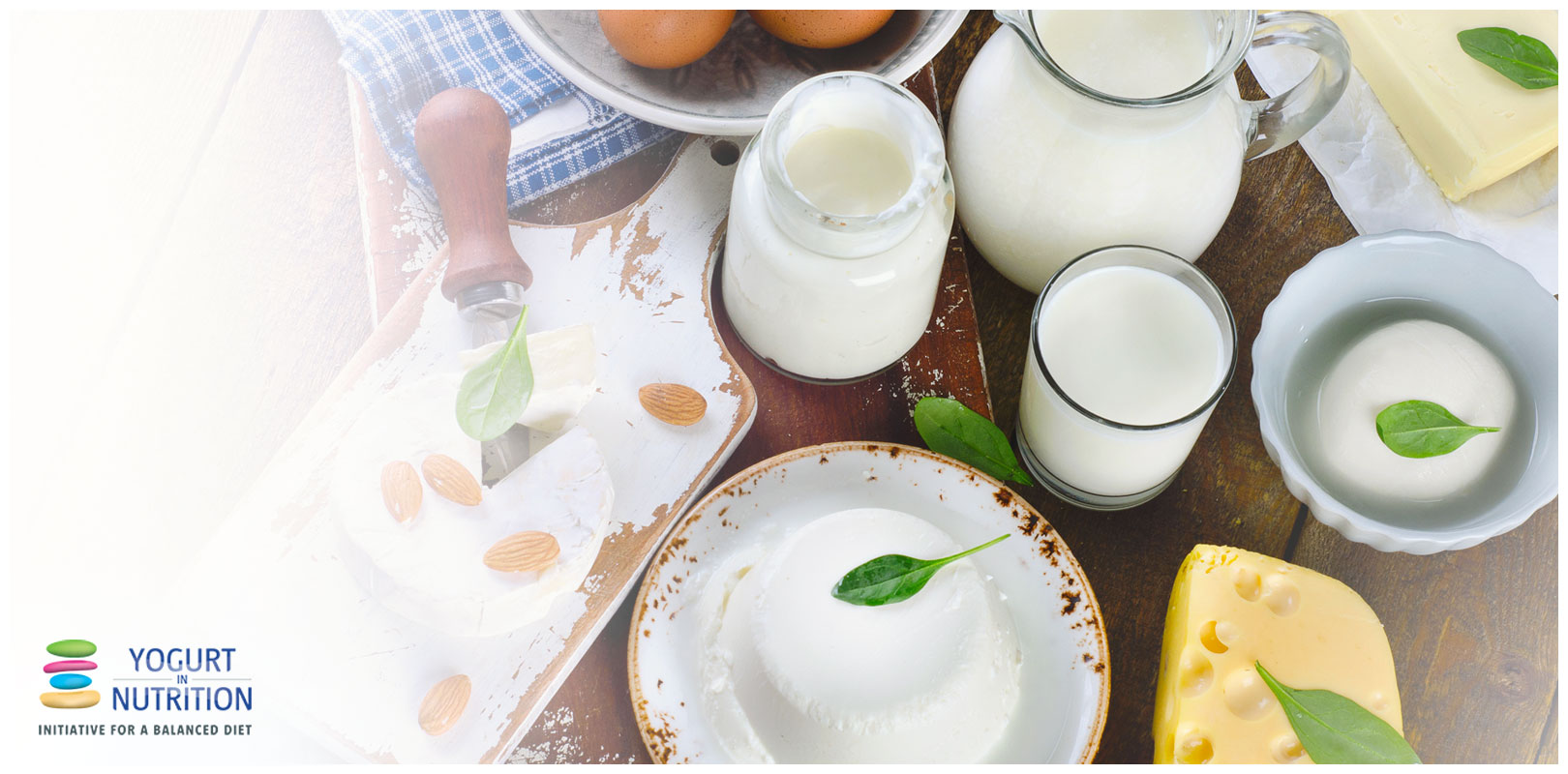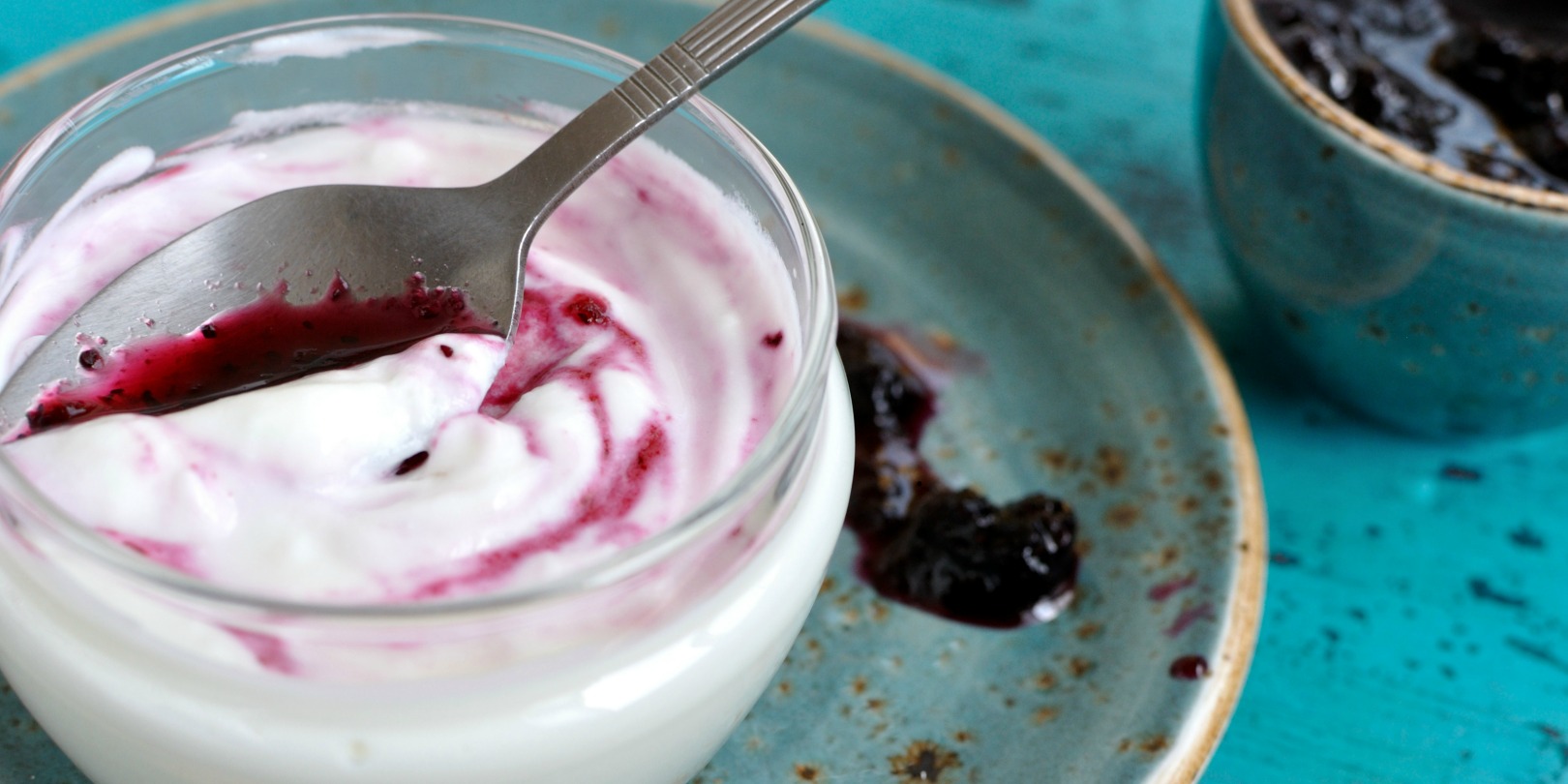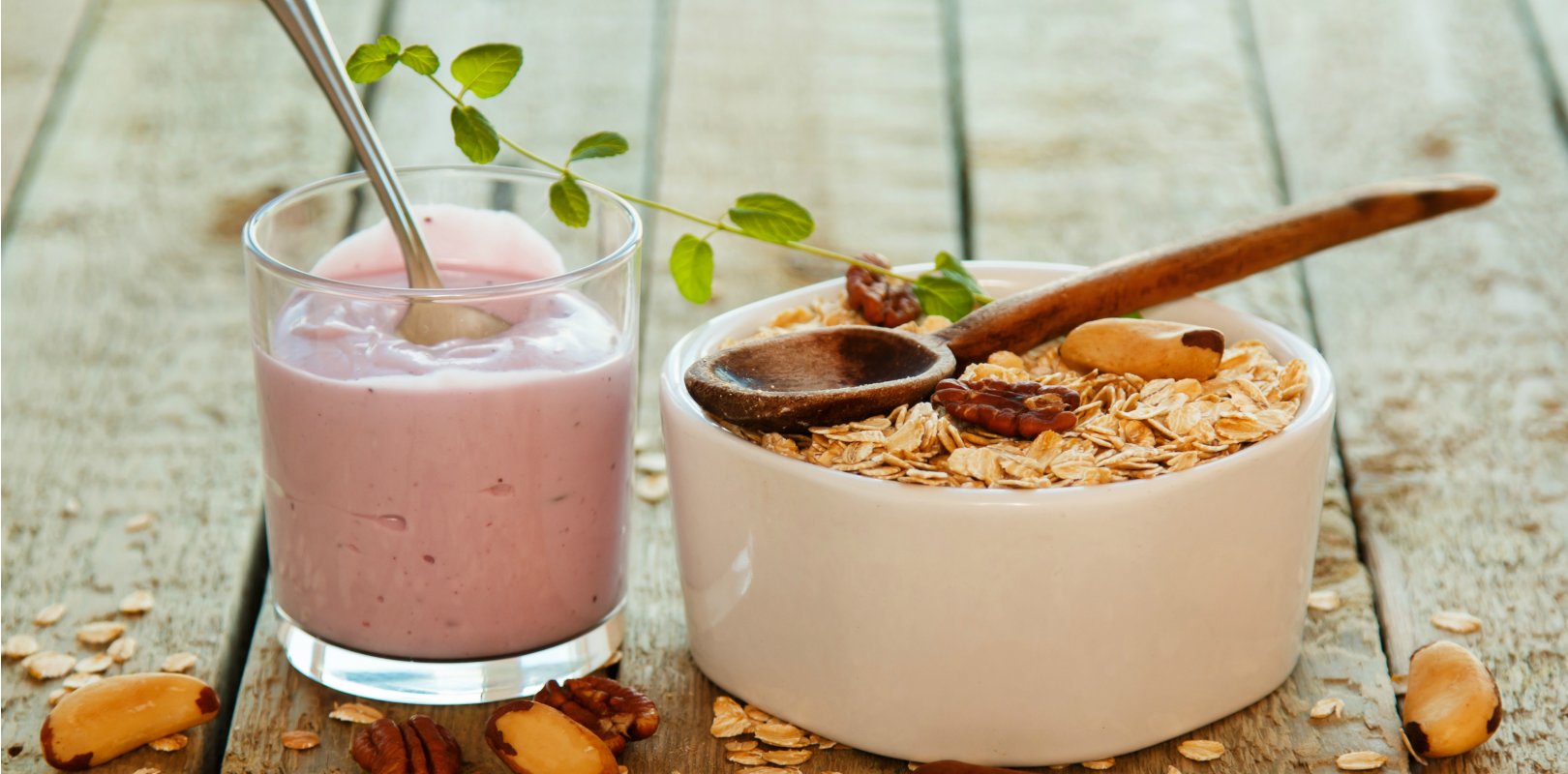Process, history, nutritional data… let’s explore more about this fermented dairy product.
What is yogurt?
Yogurt is a dairy product obtained by fermentation of milk specific microorganisms, which shall be viable, active and abundant in the product. Yogurt is described by the United Nations’ Food and Agriculture Organization and the World Health Organization in their Codex Alimentarius as a fermented milk product containing two strains of live bacteria, Lactobacillus delbrueckii subsp. bulgaricus and Streptococcus thermophilus. Both strains must remain active in the final product, with a total of at least 10 million bacteria per gram (1).
How is yogurt made?
There a many different types of yogurts or fermented dairy products, such as Greek yogurt, low-fat and no-fat yogurt, creamy, drinking, organic, high protein, frozen, etc…
However, the basic ingredients and manufacturing are essentially consistent:
- Raw milk is first transported from the farm to the manufacture where it will be processed.
- When the milk arrives at the plant, its composition is modified to be standardizedfor its dry matter, pasteurized (176°F or 80°C) and homogenized
- When pasteurization and homogenization are completed, the milk has to cool to 109.4-114.8° F (43-46°C) and the fermentation cultureis added in a concentration of about 2%. Live cultures consist of two lactic acid bacteria: Streptococcus thermophilus and Lactobacillus delbrueckii subsp. bulgaricus. These are the specific ferments of yogurt, which generates its consistency, flavor, aroma and health benefits, such as a facilitated digestion.
- After cooling, fruits, sugar, and other ingredientscan be added to obtain a large variety of products and yogurt is packaged afterwards.
- Finally, the product is cooled and stored at refrigeration temperatures (40°F or 5°C) to slow down the physical, chemical and microbiological degradation.
What is the history of yogurt?
Made by generations of people over thousands of years, yogurt has become an integral part of the diet in many cultures around the world.
Yogurt is a very ancient food. The first traces of it have been found between 10 000 and 5 000 BCE in the Neolithic period, a time when nomadic people were turning themselves to a new way of life and the beginnings of agriculture slowly led to sedentary lifestyle. The populations were also starting to domesticate animals such as cows, goats, buffalo, yaks and camels, which produced milk (2).
At that time, herdsmen in the Middle East carried milk in bags made of animal gut. Contact with intestinal enzymes may have caused the milk to curdle and sour. This may have led to the realization that a dairy product could be conserved for a relatively long period.
Yogurt was well known in the Greek and Roman empires, and it is even mentioned in the Bible and the word ‘yogurt’ is believed to stem from a Turkish word meaning to thicken, coagulate or curdle.
In the 11th century, the curative properties of yogurt were evaluated for the first time in Turkish literature, suggesting its use in conditions such as diarrhea and stomach cramps.
According to legend, 12th century Mongolian ruler Genghis Khan fed his army yogurt, believing it instilled strength and bravery.
Yogurt was introduced into Western Europe in the 16th century by the King of France, François the first, after he was given it by a doctor from Turkey as a treatment for severe diarrhea (3).
Starter cultures that convert lactose in milk to lactic acid have been used in the inoculation of fresh milk with small quantities of sour milk since long before anything was known about bacteriology. For people living in primitive sanitary conditions, making fermented milk products offered a safe way of preserving dairy because the acidity of these products destroyed pathogens. The first observation of bacteria in sour milk was made by Antonie van Leeuwenhoek in about 1675.
However, it was not until the 20 th century that the first glimpse was caught of an explanation for the health benefits associated with yogurt consumption.
In 1905 a Bulgarian medical student, Stamen Grigorov, described the lactic acid bacteria in yogurt, Bacillus bulgaricus – now Lactobacillus bulgaricus – which is still used in yogurt nowadays
In 1909, Nobel Prize-winner Elie Metchnikoff suggested that ageing is caused by toxic bacteria in the gut and that lactic acid could extend life.
Throughout the 20th century, yogurt began to be manufactured in order to be sold commercially. The first yogurt factory was opened in 1932, in France by Daniel Carasso. Its potential health benefits drew so much interest that yogurt was first sold in pharmacies. Today, yogurt is widely recognized as a healthy food and is still part of many diets around the world (3).
What are the different types of yogurts?
There is a lot of varieties of yogurt on the market, depending of the manufacturing procedure and ingredients, added to plain yogurt before or after fermentation:
The type of milk used (skimmed, semi-skimmed or whole), and eventually the addition of cream, will determine the final fat content of yogurt.
- For stirred-style yogurt, milk is fermented into jacketed fermentation tank. After fermentation, the content is stirred. Fruit and flavor may be incorporated, then the content is cooled and products are packaged and stored at refrigeration temperatures.
- For set-style yogurt, also known as French style, the milk is inoculated with ferments and added with other ingredients (fruit preparation, sugar, flavors…) before packaging. The fermentation process occurs in packages during the incubation period, after which the product is cooled and stored at refrigeration temperatures.
- Drinking yogurt is stirred yogurt that has a low total solids content and which has undergone homogenization to further reduce the viscosity. Sweetener, flavoring and coloring ingredients may then be added and the product is packed in bottles.
What is Greek yogurt?
Greek yogurt is a higher protein yogurt (≥5.6%) with a smooth creamy mouthfeel. It is a concentrated fermented milk as defined by Codex Alimentarius, which specifies that the protein content must be at least 5.6 g per 100 g.
It is fermented by Lactobacillus bulgaricus and Streptococcus thermophilus: bacteria feed on the lactose, releases lactic acid which coagulates milk proteins and produces typical aromatic compounds.
The lactoserum (or whey) is strained out after fermentation, which differenciates it from regular yogurt and provides its consistent, velvety texture and a low lactose content.
There is no specific controlled denomination, either for Greek yogurt or Greek-style yogurt. Only local decrees, varying from one country to another, regulate the names. The official denomination of “Greek yogurt” may vary between countries: Greek yogurt, Greek-style yogurt, strained yogurt, and so on.
Reading the label provides useful clarifications on the real nature of the yogurt.
Discover the dedicated infographic about Greek yogurt
What is Skyr?
Skyr is a fermented fresh acid-curd soft cheese. It is made from skim milk through a specific double fermentation process:
- Fermentation by Streptococcus thermophilusand Lactobacillus delbrueckii ssp. bulgaricus, as in a classic yogurt, that will feed on the sugar content of milk (lactose) yielding lactic acid lowering sugar content, lowering pH that coagulates milk proteins, producing aromatic components
- Occasional fermentation by Lactococcus spp & Lactobacillus casei
After fermentation, an intense straining gives it a dense texture, so thick that a spoon will stand up in it. Thanks to this intense straining, the skyr will be high in proteins (8 to 10g/100g) and low in lactose.
Discover the dedicated infographic about Skyr
What is lactic acid fermentation?
Lactic acid fermentation is the process, whereby milk is converted into yogurt. It results from the action of lactic ferments, which are for yogurt two specific micro-organisms: Streptococcus thermophilus and Lactobacillus delbrueckii subsp. bulgaricus (4).
Lactic acid fermentation is also used in the production of sauerkraut, sour beer, or numerous fermented vegetables (tempeh, kimchi,…) (4).
During the fermentation, the milk sugar (lactose) is first converted into glucose and galactose, after what these simple sugars are converted into lactic acid.
The formation of lactic acid gives some acidity (pH 4.5), which helps to coagulate the proteins (caseins) and set the milk, producing the specific texture of yogurt. Lactic acid fermentation also produces compounds (carbon dioxide, peptides, amino acids…) that give yogurt its distinctive flavor (5).
Nutrition Facts about yogurt: what is the nutrient composition of Yogurt?
For a plain yogurt
Sources : USDA – Yogurt, plain, whole-milk (2024) – INRAE CIQUAL –Plain yogurt (average) (2024) – BEDCA – yogurt, Bulgarian style (2024)
For a flavored sweetened yogurt
Sources : USDA – Yogurt, greek, non-fat, strawberry (2024) – INRAE CIQUAL –Flavored or fruit yogurt (average) (2024) – BEDCA – yogurt, whole milk, strawberry (2024)
*The average composition varies from one country to another as yogurt maybe skimmed or whole milk depending on the country and database
**total sugars include the lactose naturally present in the yogurt (due to natural milk composition and with no sweetening role)
The nutrient composition of yogurt is based on the nutrient composition of the milk from which it is derived. The final composition is determined by:
- the source and type of milk solids that may be added before fermentation,
- lactic acid fermentation and the strains of bacteria used in the fermentation,
- the temperature,
- the duration of the fermentation process, storage time, and by
- ingredients (such as fruits) which may be added in some types of yogurt
Yogurt is an excellent source of protein with a high quality score, linked to high digestibility and richness in essential amino acids. Besides, the proteins contained in yogurt are more easily digestible than these of standard milk. This could be the result of the fermentation process, which breaks them in smaller entities (6). The high quality proteins of yogurt bring lasting satiety. For instance, a study found that, in mid-afternoon, women were less hungry after having a high protein yogurt than after having high-fat crackers or chocolate.
Yogurt contains also a wide range of fatty acids (7).
Yogurt is a source of vitamins and micronutrients (calcium, potassium) (9,10).
What are the health benefits of yogurt?
Regular yogurt intake appears necessary to provide a sustainable benefit on host. Yogurt and dairy products are recognized by most regulatory authorities and scientific institutions as part of a healthy diet.
Yogurt is characterized by its living bacteria, which, in addition to its high nutrient density and its palatability, have been demonstrated to improve lactose digestion (11).
Recent studies suggest that yogurt could play a valuable role on health.
All detailed studies on the health benefits of dairy fermented products are available in our publication “Yogurt, from science to health (2023)”.
Can I eat yogurt when I am lactose intolerant?
Lactose intolerance can result from a natural physiological phenomenon. Lactose is the natural sugar of milk digested by humans thanks to an enzyme called lactase. Lactase activity decreases from infancy until adulthood and may lead to a deficiency. This intolerance affects nearly three quarters of the world’s population with a frequency varying geographically by country and region and by the age of the individual.
Lactase deficiency causes maldigestion of lactose, which often leads to total or partial avoidance of milk and dairy products, which is not always justified. It can entail additional difficulty in satisfying the child’s or adult’s calcium needs and risks their bone health.
Contrary to conventional wisdom, the consumption of dairy products can be maintained, subject to certain hygiene and dietary rules. Incorporating dairy products, including yogurt, improves the quality of the diet, and reduces nutrient deficiencies.
The lactose in yogurt is digested more efficiently than other dairy sources of lactose because the bacteria inherent in yogurt assist with its digestion. Yogurt has the particular characteristic of being well tolerated by individuals who find lactose difficult to digest. It allows them to get all the nutritional benefits of milk. It is therefore a useful alternative to milk to meet daily calcium needs and to help prevent osteoporosis. This is why the regular consumption of at least one serving of yogurt per day is highly recommended. It improves lactose digestion thanks to its specific live cultures (Streptococcus thermophilus and Lactobacillus bulgaricus), which remain active all the way through the digestive tract. Furthermore, its thicker-than-milk consistency leaves more time for the residual lactase to act.
Is it possible to consume yogurt while suffering from allergy to cow’s milk?
Allergy to cow’s milk protein is an immune response to a minute quantity of cow’s milk protein, and is usually detected in early childhood. It only affects 2% to 6% of infants and disappears in two-thirds of cases around the age of 2 or 3. In France, this affects 0.6% of children under the age of 15 (and is far less prevalent than egg or peanut allergies).
Very few adults (0.1% to 0.5%) are allergic to milk. The symptoms are mainly digestive and, depending on the individual, may be accompanied by, for instance, muscle or joint pain, headaches, nausea, lethargy, acne, sore throat. Often allergy to cow’s milk protein is confused with lactose intolerance, but unlike lactose intolerance, allergy to cow’s milk requires to completely avoid dairy products.


